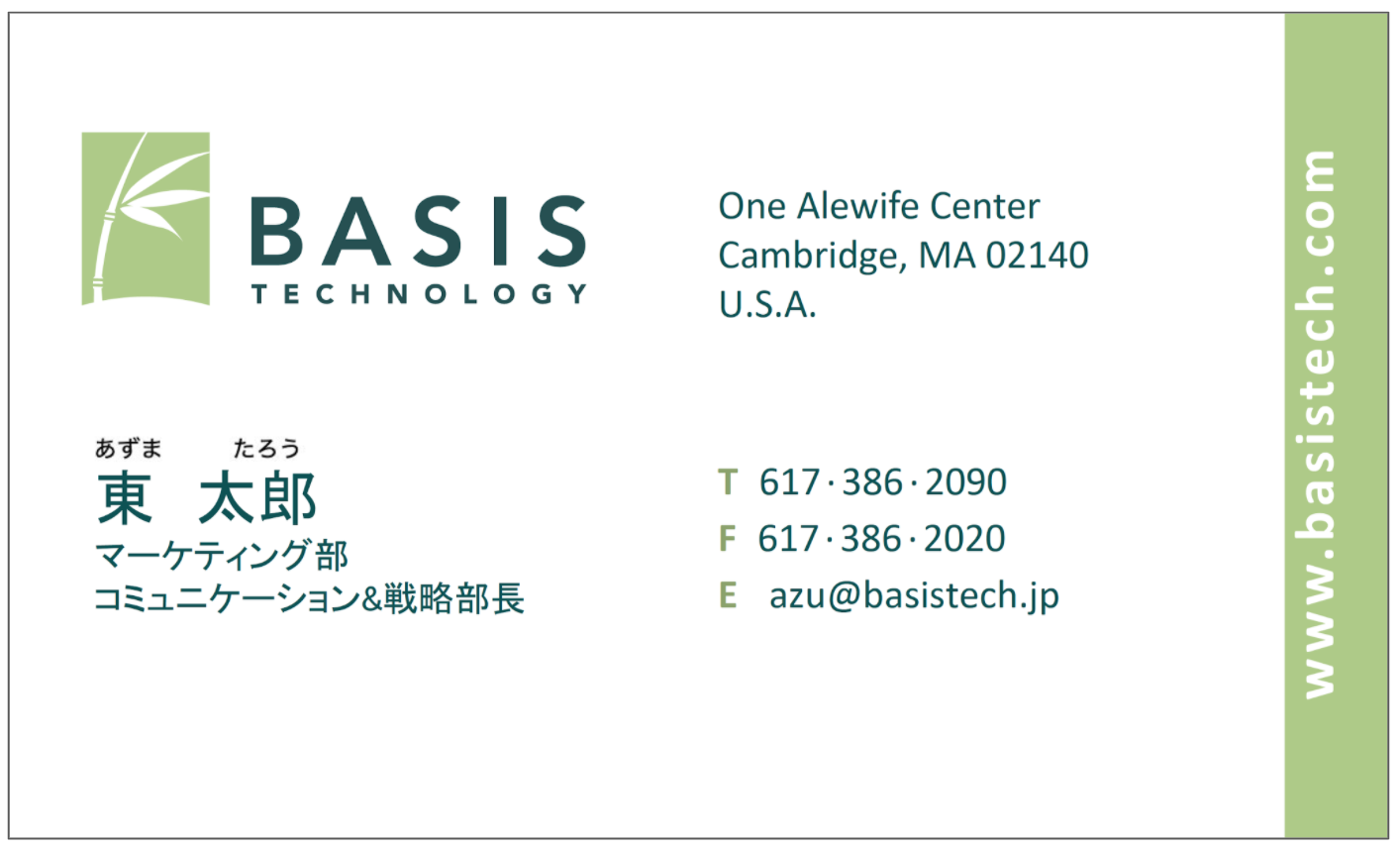Japanese names for people occupy an unusual niche in that seeing a written name doesn’t mean you’ll know how to pronounce it. Furthermore, hearing a name doesn’t mean you’ll know how to write it — even if you are a native Japanese speaker!
How come? Let’s start with a quick overview of written Japanese.
Japanese, the Written Language
Japanese uses three scripts for writing: ideographs and two syllabic alphabets (where each character represents a syllable).
Ideographic Script: Japanese Kanji
Kanji are borrowed Chinese ideographs that represent an idea, but whose pronunciation changes based on word context. Here is a (incomplete) sampling of one Kanji character’s various pronunciations.
The character 生 has a basic meaning of “life.” It has an especially prolific set of pronunciations.
KANJI WORD | PRONUNCIATION | EXPLANATION |
|---|---|---|
| 先生 | “sensei” | Combined with Kanji 先 (meaning: before, ahead) 生 is pronounced “sei”. 先生 = “teacher” (i.e., the one who was born before you) |
| 生 | “nama” | Standalone word meaning “raw” as in “raw meat,” but when prefixed to the word for “broadcast” (中継 chuukei), 生中継 (nama chuukei) means “live broadcast.” |
| 生かす | “i(kasu)” | 生 is pronounced “i” for the verb meaning “to use” (i.e., make something “alive” by using it) and combined with Hiragana (syllabary) characters “kasu.” |
| 生まれる | “u(mareru)” | 生 is pronounced “u” for the verb meaning “to be born” and combined with Hiragana (syllabary) characters “mareru.” |
Phonetic Scripts: Hiragana and Katakana
Two syllabary alphabets, Hiragana and Katakana, in Japanese represent the same 46 syllables, with no meaning attached to any character. In general, Hiragana, more curvy in appearance, are used for Japanese words and Katakana is used for borrowed words from other languages.
HIRAGANA | KATAKANA | PRONUNCIATION |
|---|---|---|
| あ | ア | a |
| き | キ | ki |
| こ | コ | ko |
See a full table of Hiragana and Katakana characters here.
Ambiguous Japanese Name Readings and Spellings
As a result, since Kanji is used for the majority of names (certainly all family names), there is a great deal of ambiguity as to how to pronounce names — aka, the readings. In fact, Japanese business cards commonly include the reading of a person’s name to avoid embarrassment for the card receiver, and Japanese people are used to including their name pronunciation in Hiragana or Katakana for any form they fill out.
In the example below, the reading for the name “Azuma Taro” is given in Hiragana (tiny Hiragana above the Kanji).

The table below is just a small sampling of this phenomenon. In general, Japanese has many homophones where one reading can map to many Kanji combinations, as shown below for the male given names “Takeshi,” “Koji,” and “Hiroshi.”
Examples of Kanji Given Names with Multiple Readings
(source)
Kanji Given Names | Possible Readings (In Hiragana and English) |
|---|---|
| 光希 | こうき Koki or みつき Mitsuki |
| 幸子 | ゆきこ Yukiko or さちこ Sachiko |
| 清一 | きよかず Kiyokazu or せいいち Seiichi |
| 裕美 | ひろみ Hiromi or ゆみ Yumi |
| 裕司 | ひろし Hiroshi or ゆうじ Yuji |
| 広志 広治 浩志 宏司 | ひろし Hiroshi or こうじ Koji |
| 高志 孝司 | たかしTakeshi or こうじ Koji |
| 健司 健志 健史 | たけし Takeshi or けんじ Kenji |
Some parents may choose to use only Hiragana (ようこ “Yoko”) or a mix of Kanji and Katakana (ヨウ子 “Yoko”) or a mix of Kanji and Hiragana (よう子 “Yoko”).
Then there are pronunciations for Kanji that are ONLY used for names.
東 means “east” and is normally pronounced “higashi” or “tou” (as in Tokyo 東京), but as a surname it is pronounced “Azuma.”
Japanese Nicknames
Unlike English, which has many “standard” nicknames (such as Liz, Beth, or Eliza for Elizabeth, or adding of an “ie” sound at the end (Charles > Charlie, Katherine > Kate > Katie), Japanese nicknames are much more ad hoc. They are often a shortening of sounds in the name plus 君(-kun) or ちゃん(-chan) (diminutive forms of -san, the term of respect that one uses when addressing another person). Or for two-word names, might be combining the initial sound of each word as with “Brad Pitt” to “BuraPi.”
GIVEN NAME | ||
|---|---|---|
| 正明 Masaaki | まあくん Maakun | |
| 哲子 Tetsuko | てっちゃん Tetchan | |
| 勝也 Katsuya | かっちゃん Katchan | |
| 安成 Yasunari | やあちゃん Yā-chan | |
| 木村 拓哉 Kimura Takuya (Japanese celebrity) | キムタク Kimutaku | |
| ブラッド・ピット Buraddo Pitto (U.S. actor Brad Pitt) | ブラピ Burapi |
Source: https://en.wikipedia.org/wiki/Japanese_name#Nicknames
Japanese Approaches to Naming
When parents name their child, they might start with Kanji for its pleasing meaning or with the sound of a name, like “Yoko” or “Hiroshi.” It’s unsurprising that the “most popular names of the year” lists show both. Currently girls names which end in -ko 子 (meaning “child”) are less popular than in the past as you can see below.
Below are the top five most popular female and male names for 2019 and 1970.
2019 Top Five Girl Names
(Source)
| By Kanji character, with Romanized reading 1. 陽葵(Himari) Kanji meaning: sun+hollycock 2. 凛(Rin) Kanji meaning: cold 3. 紬(Tsumugi)Kanji meaning: pongee (a knotted silk cloth) 4. Tied for 4th: 莉子(Riko)Kanji meaning: jasmine+child and 芽依(Mei)Kanji meaning: bud+reliant/depend on | By reading in Hiragana and Romanized (Kanji characters for these names will vary) 1. めい Mei 2. あかり Akari 3. ひまり Himari 4. ゆい Yui 5. みお Mio |
1970 Top Five Girl Names
(source)
| By Kanji character, with Romanized reading 1. 直 美 (Naomi) Kanji meaning: straight+beautiful 2. 智 子 (Tomoko) Kanji meaning: wisdom+child 3. 陽 子 (Yoko) Kanji meaning: sun+child 4. 裕 子 (Yuko) Kanji meaning: abundant/rich+child 5. 由美子 (Yumiko) Kanji meaning: reason+beauty+child |
2019 Top Five Boy Names
(source)
| By Kanji character, with Romanized reading 1. 蓮(Ren)Kanji meaning: lotus flower or seed 2. 湊(Minato)Kanji meaning: gathering, pier 3. 陽翔(Haruto)Kanji meaning: sun/sunlit+flying/detailed 4. 律(Ritsu)Kanji meaning: straight, upright 5. 樹(Itsuki)Kanji meaning: tree | By reading in Hiragana and Romanized はると (Haruto) そうた (Sota) みなと (Minato) ゆうと (Yuto) りく (Riku) |
1970 Top Five Boy Names
(source)
| 1. 健一 (Ken’ichi) Meaning: healthy, strong 2. 誠 (Makoto) Meaning: sincerity 3. 哲也 (Tetsuya) Meaning: philosophy, clear 4. 剛 (Tsuyoshi or Takeshi) Meaning: strong, manly 5. 博 (Hiroshi) Meaning: learned |
Modern Names
Traditionally, Japanese girl names often end in “-ko” (子), “-ka”, “n-a”, or “-e,” while boy names end in “-rou”, “-o,” or “-hiko” (with some exceptions). However, as in other cultures, names and naming trends go through cycles of popularity. In the 2000s, many parents chose a reading and then creatively matched Kanji characters to it. In the process, they sometimes entirely ignored the standard readings attached to those characters. For example 一二三 (Kanji characters for the numbers “1, 2, 3” read “ichi, ni, san”) might be matched to the reading “do re mi.” (Yes, as in the musical notes.) These types of names are called キラキラネーム (“kira kira name,” where “kira kira” means “glittery/sparkly”) or more pejoratively, DQNネーム (pronounced “don kyoon name”).
To reign in misguided parents who might choose to name their child “demon” or anything that might expose them to teasing, the Japanese Ministry of Justice maintains a list of permissible Kanji for use in Japanese names.
Last Thoughts
Given the ambiguity of Japanese name pronunciation, they can be extremely challenging to match between the original Japanese name and its rendition in Latin characters. We will cover that topic in a future blog post.





